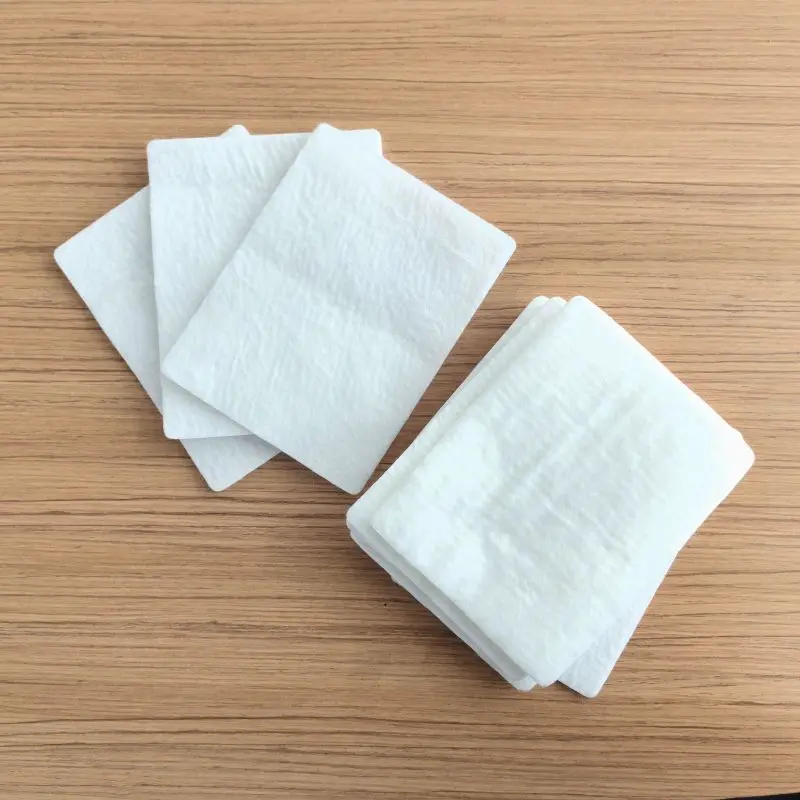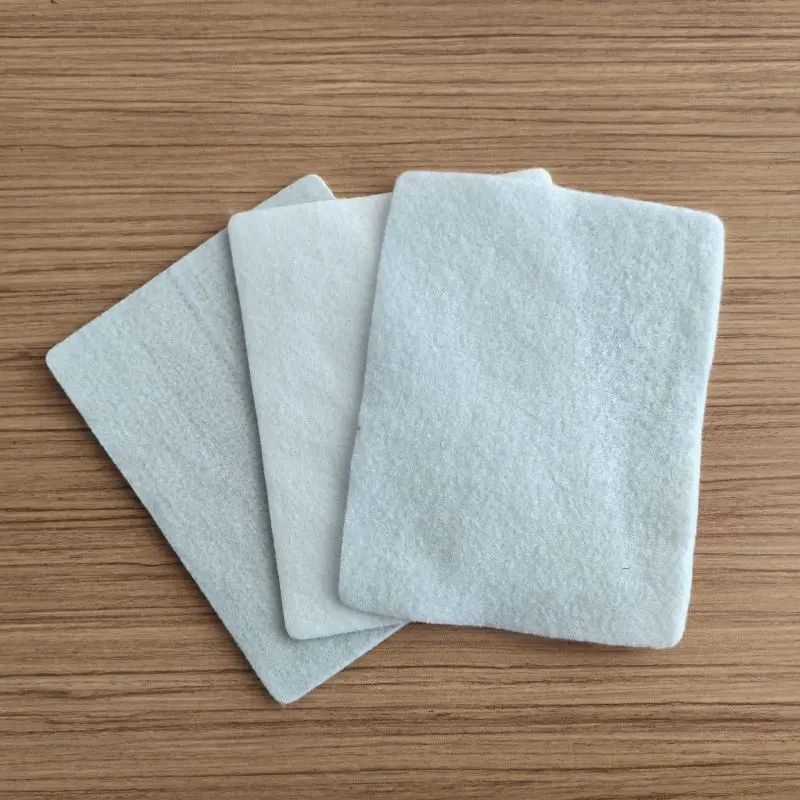Geotextile Fabric Australia: A Vital Component in Modern Engineering Projects
Geotextile fabric has become an essential component in various engineering projects across Australia. Its unique properties and versatility make it a preferred choice for numerous applications, ranging from soil stabilization to erosion control.
242914.webp)
(white Composite geotextile)
Australia, a country with diverse geographical features and climate conditions, faces various challenges in engineering and construction. From the arid deserts of the interior to the lush rainforests of the east coast, the soil and environmental conditions vary greatly. Geotextile fabric plays a crucial role in addressing these challenges, providing a reliable and effective solution for soil reinforcement and erosion prevention.
One of the primary applications of geotextile fabric in Australia is in the field of civil engineering. It is widely used in road and highway construction, where it is employed as a separator between the soil and the pavement layers. This helps to prevent the intermingling of these layers, ensuring the structural integrity and durability of the road. Additionally, geotextile fabric is also used in dam and embankment construction, providing reinforcement and stability to the soil structure.

(white filament nonwoven geotextile)
Another significant application of geotextile fabric in Australia is in erosion control. The country's diverse climate and terrain often lead to erosion issues, particularly during rainy seasons. Geotextile fabric can be effectively used to stabilize slopes and prevent soil erosion. It acts as a barrier, protecting the soil from the forces of water and wind, and reducing the risk of landslides and other erosion-related hazards.
Furthermore, geotextile fabric is also gaining popularity in the agricultural sector in Australia. Farmers and agricultural engineers are increasingly utilizing this material to improve soil fertility and water retention. By incorporating geotextile fabric into the soil, it helps to retain moisture and nutrients, enhancing crop growth and yields.
176457.webp)
(white Staple fiber nonwoven geotextile)
In summary, geotextile fabric plays a pivotal role in modern engineering projects in Australia. Its diversity and adaptability make it an ideal choice for addressing various challenges, including soil reinforcement, erosion control, and agricultural improvement. With the continued development of infrastructure in Australia, the demand for geotextile fabric is expected to continue to grow, further consolidating its position in the engineering field of the country.
Technical specification of filament spunbond needle punched non woven geotextile(GB/T17639-2008)
ITEM | Indicators | |||||||||
Nominal Tensile Strength/(kN/m) | 4.5 | 7.5 | 10 | 15 | 20 | 25 | 30 | 40 | 50 | |
1 | Longitudinal and Transverse Tensile Strength/(kN/m) ≥ | 4.5 | 7.5 | 10 | 15 | 20 | 25 | 30 | 40 | 50 |
2 | Elongation Corresponding to Longitudinal and Transverse Standard Strength/% | 40~80 | ||||||||
3 | CBR Burst Strength/kN ≥ | 0.8 | 1.6 | 1.9 | 2.9 | 3.9 | 5.3 | 6.4 | 7.9 | 8.5 |
4 | Longitudinal and Transverse Tear Strength/kN ≥ | 0.14 | 0.21 | 0.28 | 0.42 | 0.56 | 0.7 | 0.82 | 1.1 | 1.25 |
5 | Equivalent Aperture O30 (O35)/mm | 0.05~0.20 | ||||||||
6 | Vertical Permeability Coefficient/(cm/s) | KX(10-1~10-3) 其中:K=1.0~9.9 | ||||||||
7 | Thickness/mm ≥ | 0.8 | 1.2 | 1.6 | 2.2 | 2.8 | 3.4 | 4.2 | 5.5 | 6.8 |
8 | Width Deviation/% | —0.5 | ||||||||
9 | Mass Per Unit Area Deviation/% | -5 | ||||||||
Note 1: Specifications are determined based on tensile strength. If the actual specifications fall between adjacent specifications in the table, the corresponding assessment indicators shall be calculated using a linear interpolation method. In cases where the specifications exceed the range in the table, the assessment indicators shall be determined by mutual agreement between the supplier and the buyer. Note 2: When the actual tensile strength is lower than the standard strength, the elongation corresponding to the standard strength shall not be subject to compliance judgment. Note 3: The standard values for items 8 to 9 shall be determined according to the design or agreement. | ||||||||||
Technical Specifications for Short-Fiber Needled Nonwoven Geotextiles (GB/T 17638-2017)
I t e m | Nominal Breaking Strength/(kN/m) | |||||||||
3 | 5 | 8 | 10 | 15 | 20 | 25 | 30 | 40 | ||
1 | ≥Breaking strength(MD/CD)/(kN/m) | 3.0 | 5.0 | 8.0 | 10.0 | 15.0 | 20.0 | 25.0 | 30.0 | 40.0 |
2 | Nominal breaking strength/% | 20~100 | ||||||||
3 | Bursting Strength/kN | 0.6 | 1.0 | 1.4 | 1.8 | 2.5 | 3.2 | 4.0 | 5.5 | 7.0 |
4 | Deviation Rate of Mass per Unit Area/% | 土5 | ||||||||
5 | Deviation Rate of Width/% | —0.5 | ||||||||
6 | Deviation Rate of Thickness/% | 土10 | ||||||||
7 | Equivalent Opening Size O90(O95)/mm | 0.07~0.20 | ||||||||
8 | Vertical Permeability Coefficient/(cm/s) | K×(10-1~10-3) 其中:K=1.0~9.9 | ||||||||
9 | Tear Strength in Longitudinal and Transverse Directions/kN ≥ | 0.10 | 0.15 | 0.20 | 0.25 | 0.40 | 0.50 | 0.65 | 0.80 | 1.00 |
10 | Acid and Alkali Resistance (Strength Retention Rate)/% ≥ | 80 | ||||||||
11 | Oxidation Resistance (Strength Retention Rate)/% ≥ | 80 | ||||||||
12 | UV Resistance (Strength Retention Rate)/% | 80 | ||||||||
| ||||||||||
Haoyang Environmental Co., Ltd. (Haoyang) is a leading manufacturer and supplier of geotextile fabric, serving clients in Australia and beyond. With a dedicated team of professionals, including experienced engineers and researchers, we specialize in the production and sale of high-quality geotextile fabric solutions. Our commitment to innovation and technical excellence ensures that we deliver products tailored to meet the unique needs of Australian projects. Trust Haoyang for reliable, durable, and cost-effective geotextile fabric solutions that meet the highest industry standards.


288.webp)
503.webp)
759.webp)
241.webp)

191.webp)